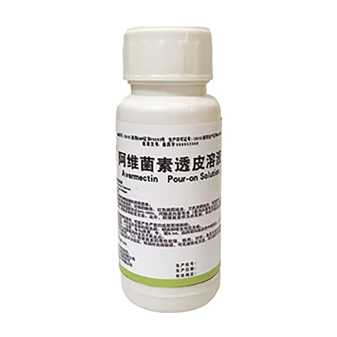- Afrikaans
- Albanian
- Amharic
- Arabic
- Armenian
- Azerbaijani
- Basque
- Belarusian
- Bengali
- Bosnian
- Bulgarian
- Catalan
- Cebuano
- Corsican
- Croatian
- Czech
- Danish
- Dutch
- English
- Esperanto
- Estonian
- Finnish
- French
- Frisian
- Galician
- Georgian
- German
- Greek
- Gujarati
- Haitian Creole
- hausa
- hawaiian
- Hebrew
- Hindi
- Miao
- Hungarian
- Icelandic
- igbo
- Indonesian
- irish
- Italian
- Japanese
- Javanese
- Kannada
- kazakh
- Khmer
- Rwandese
- Korean
- Kurdish
- Kyrgyz
- Lao
- Latin
- Latvian
- Lithuanian
- Luxembourgish
- Macedonian
- Malgashi
- Malay
- Malayalam
- Maltese
- Maori
- Marathi
- Mongolian
- Myanmar
- Nepali
- Norwegian
- Norwegian
- Occitan
- Pashto
- Persian
- Polish
- Portuguese
- Punjabi
- Romanian
- Russian
- Samoan
- Scottish Gaelic
- Serbian
- Sesotho
- Shona
- Sindhi
- Sinhala
- Slovak
- Slovenian
- Somali
- Spanish
- Sundanese
- Swahili
- Swedish
- Tagalog
- Tajik
- Tamil
- Tatar
- Telugu
- Thai
- Turkish
- Turkmen
- Ukrainian
- Urdu
- Uighur
- Uzbek
- Vietnamese
- Welsh
- Bantu
- Yiddish
- Yoruba
- Zulu
8 月 . 13, 2024 06:06 Back to list
Exploring the Use of Glutaraldehyde Solution for Effective Sterilization in Medical Applications
Glutaraldehyde Solution for Sterilization An Overview
Glutaraldehyde is a powerful chemical compound widely used in the medical and laboratory fields as a potent sterilizing and disinfecting agent. It is particularly valued for its ability to eliminate a broad spectrum of microorganisms, including bacteria, viruses, fungi, and spores. Glutaraldehyde is a dialdehyde, and its efficacy as a sterilant is supported by its ability to alkylate proteins, thereby disrupting essential cellular functions.
Properties and Concentration
Glutaraldehyde is typically available in aqueous solutions, with concentrations ranging from 2% to 25%. The most commonly used sterilizing solution is 2-3% glutaraldehyde, as it provides effective disinfection while ensuring safety for users and equipment. Higher concentrations can be corrosive and may damage sensitive instruments, making it less desirable for general use.
Mechanism of Action
The mechanism through which glutaraldehyde exerts its antimicrobial effects involves the cross-linking of proteins and nucleic acids. When exposed to microorganisms, glutaraldehyde attaches to the amino groups of proteins, leading to permanent denaturation. This action disrupts vital cellular processes, rendering bacteria, viruses, and fungi inactive. The ability to penetrate biofilms—protective layers formed by bacterial colonies—further enhances its reliability as a sterilant.
Application and Efficacy
glutaraldehyde solution for sterilization

Glutaraldehyde solutions are typically used for the disinfection of heat-sensitive medical and surgical instruments, such as endoscopes and surgical trays. Due to its broad-spectrum efficacy, glutaraldehyde is effective against several antibiotic-resistant strains, which makes it a valuable agent in combating hospital-acquired infections. Moreover, it has been shown to be effective in killing tubercle bacilli and spores, making it essential in environments where sterility is crucial.
The contact time required for effective sterilization can vary based on the concentration of the solution and the type of microorganism targeted. Generally, a minimum exposure time of 10 hours at room temperature is recommended for sterilization purposes. However, this may be adjusted according to specific guidelines outlined by health organizations, such as the CDC or WHO.
Safety and Handling
Despite its effectiveness, glutaraldehyde is classified as a hazardous material. It is known to be an irritant to the skin, eyes, and respiratory tract. Therefore, proper safety protocols must be observed when handling glutaraldehyde solutions, including the use of personal protective equipment (PPE) such as gloves, goggles, and respiratory masks. Facilities using glutaraldehyde must also ensure proper ventilation to mitigate inhalation risks.
Proper training and awareness are essential for healthcare personnel to handle glutaraldehyde safely. Spill management protocols should be established, and waste disposal must comply with local regulations concerning hazardous materials.
Conclusion
In summary, glutaraldehyde solutions serve as a critical component in sterilization processes, particularly for sensitive medical instruments. Its potency against a wide range of pathogens, combined with its ability to penetrate biofilms, makes it a valuable tool in infection control. However, the associated health risks necessitate careful handling and adherence to safety practices. By employing glutaraldehyde sterile protocols effectively, healthcare environments can significantly reduce the risk of infection and ensure patient safety. As we continue to deal with evolving challenges in medical microbiology, the role of effective sterilization agents like glutaraldehyde remains integral in safeguarding public health.
-
The Power of Radix Isatidis Extract for Your Health and Wellness
NewsOct.29,2024
-
Neomycin Sulfate Soluble Powder: A Versatile Solution for Pet Health
NewsOct.29,2024
-
Lincomycin Hydrochloride Soluble Powder – The Essential Solution
NewsOct.29,2024
-
Garamycin Gentamicin Sulfate for Effective Infection Control
NewsOct.29,2024
-
Doxycycline Hyclate Soluble Powder: Your Antibiotic Needs
NewsOct.29,2024
-
Tilmicosin Premix: The Ultimate Solution for Poultry Health
NewsOct.29,2024













